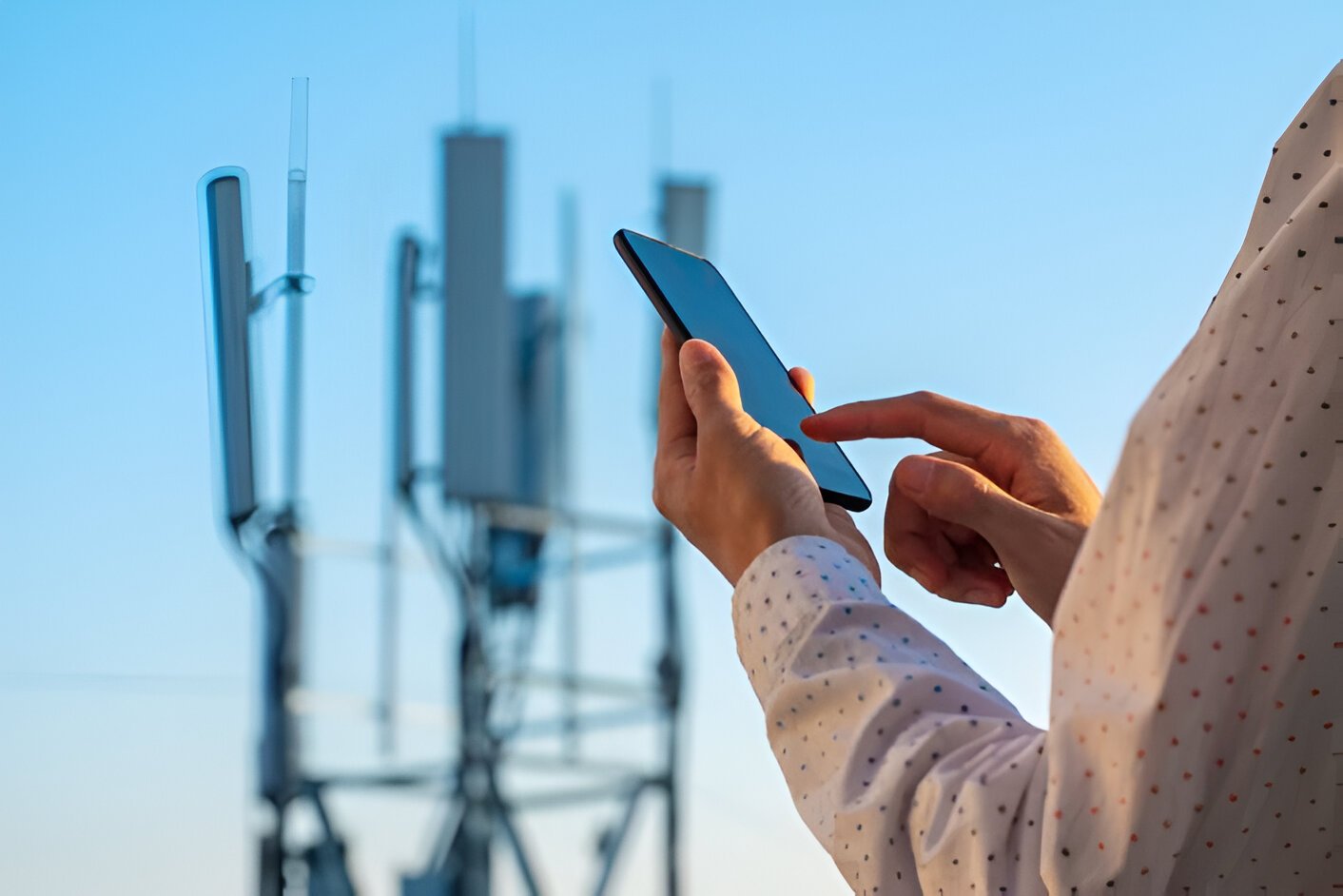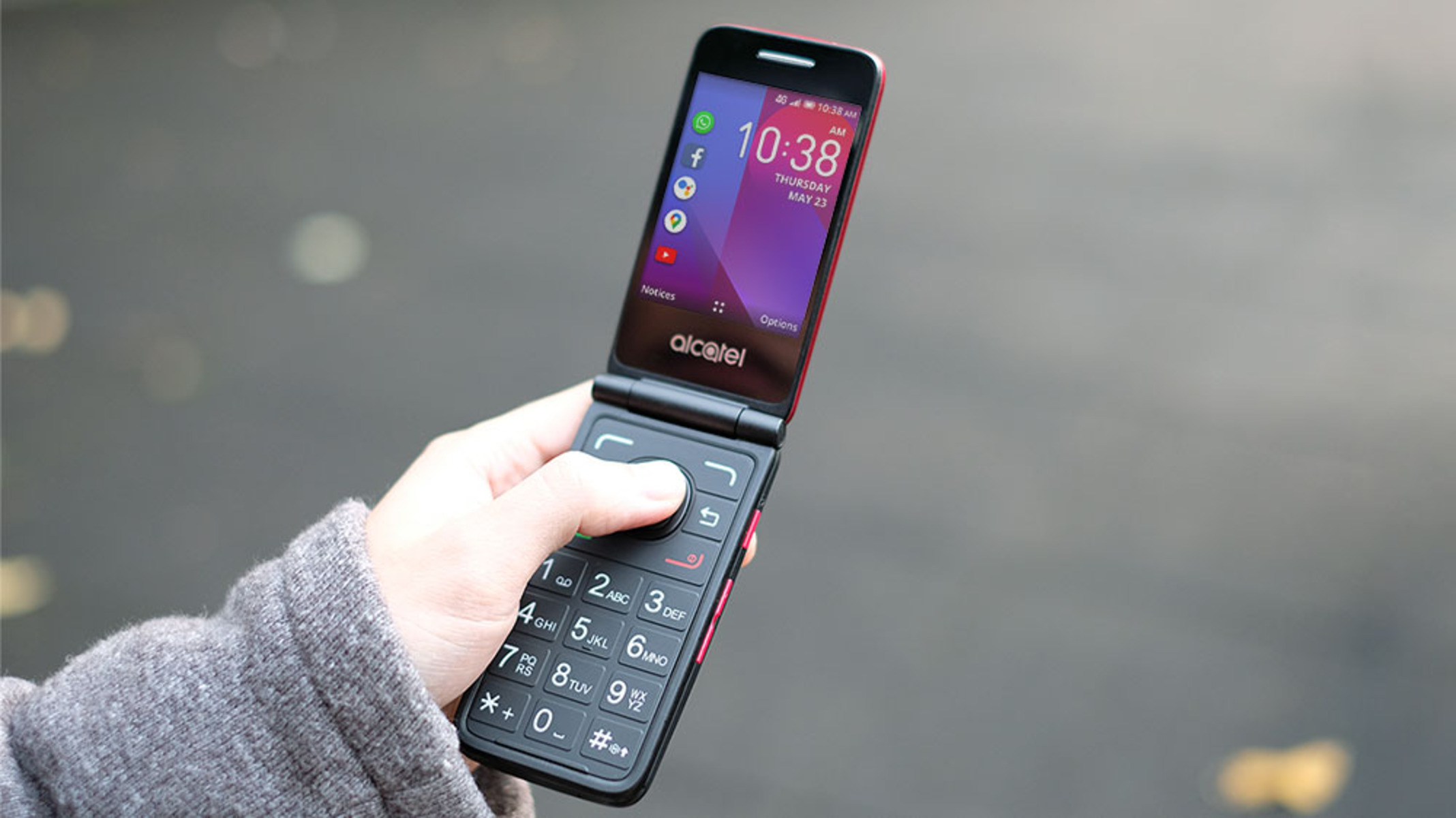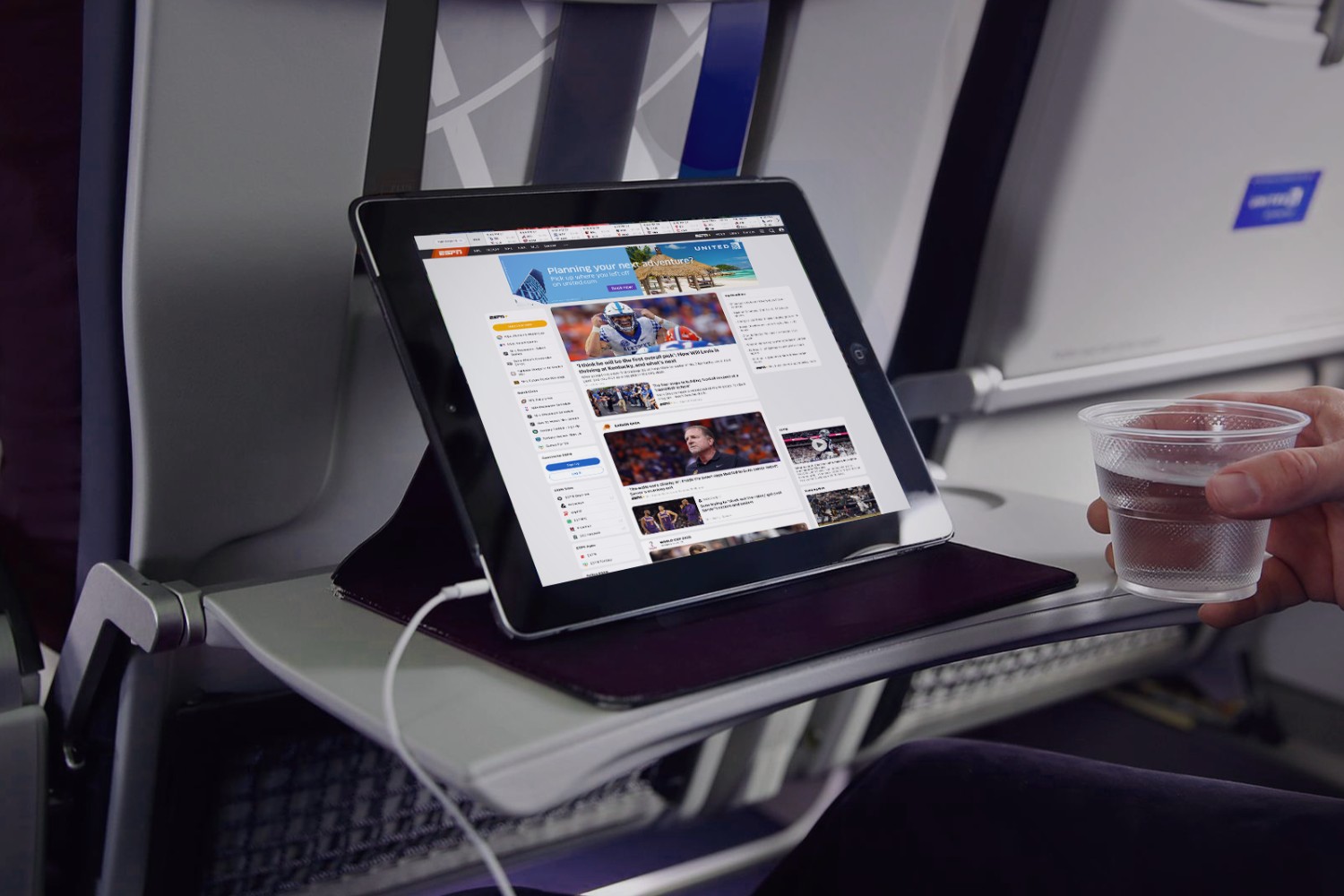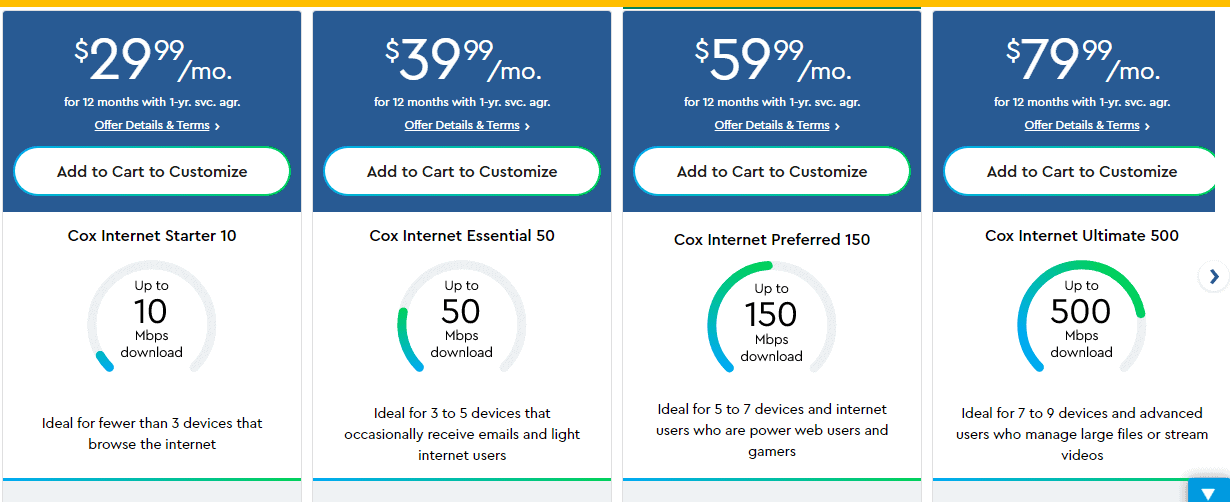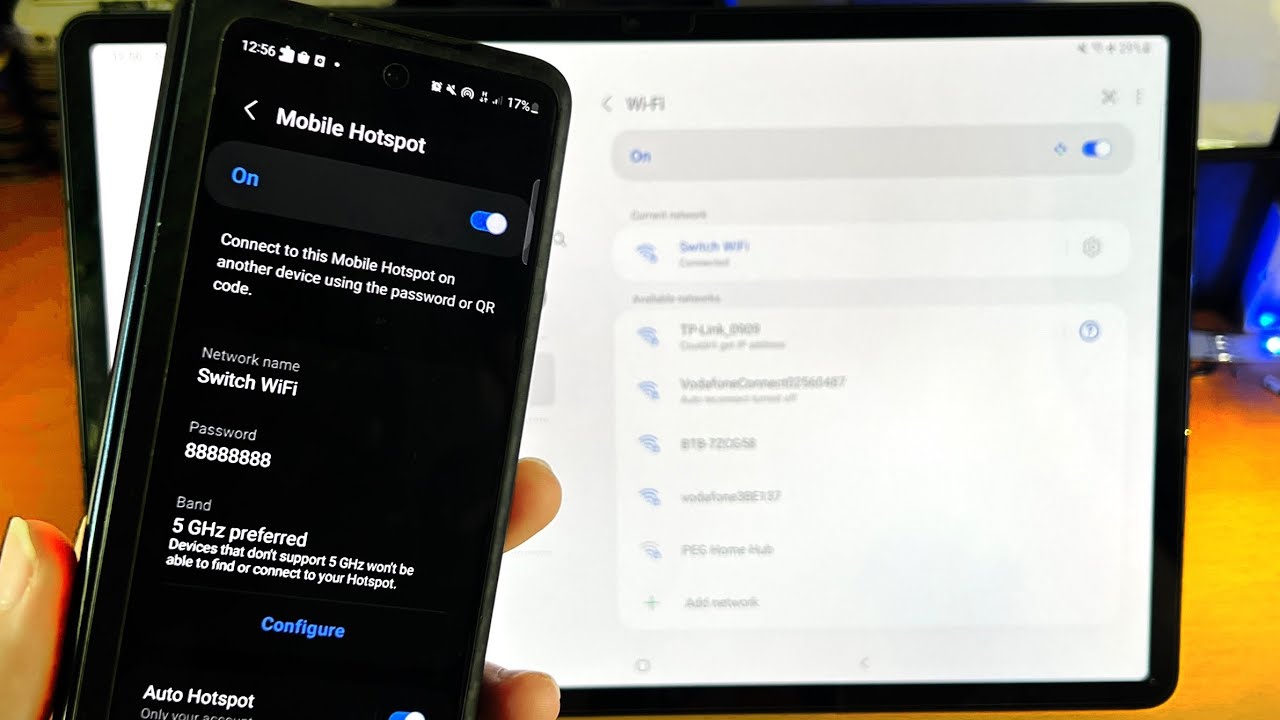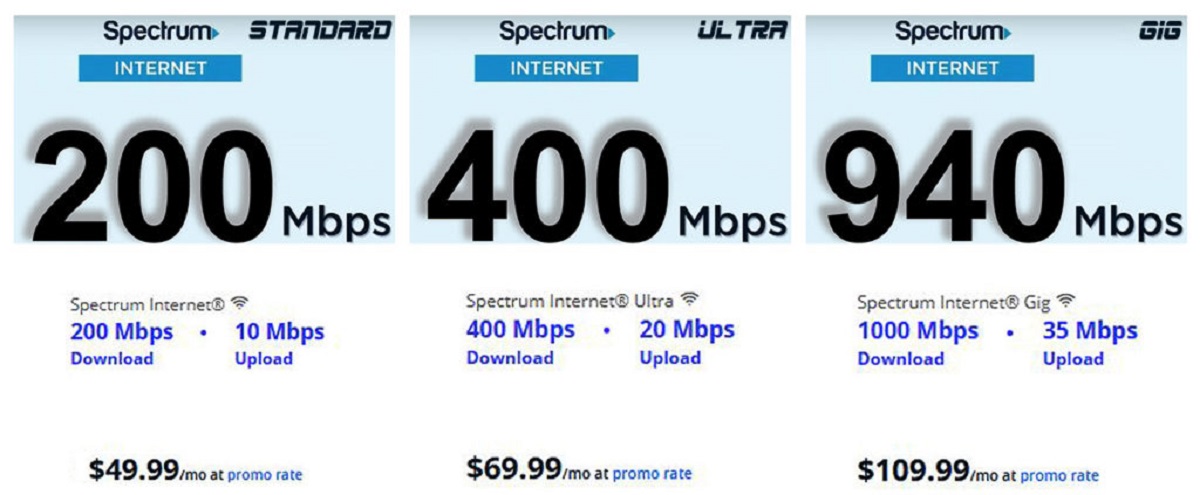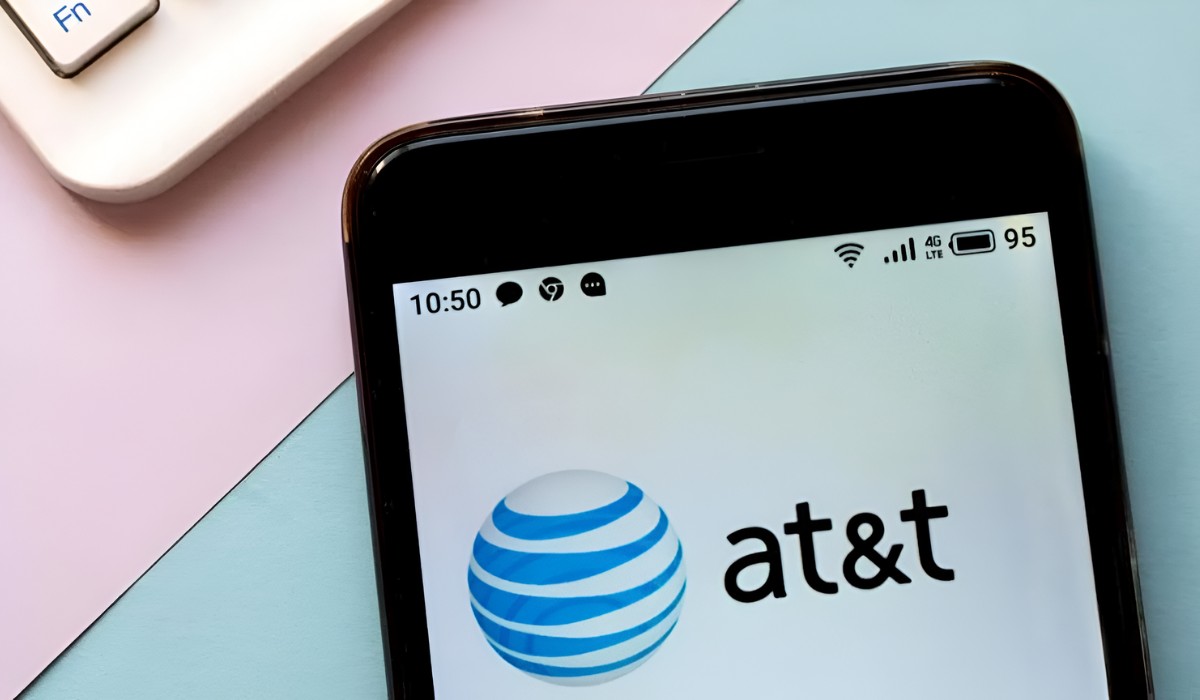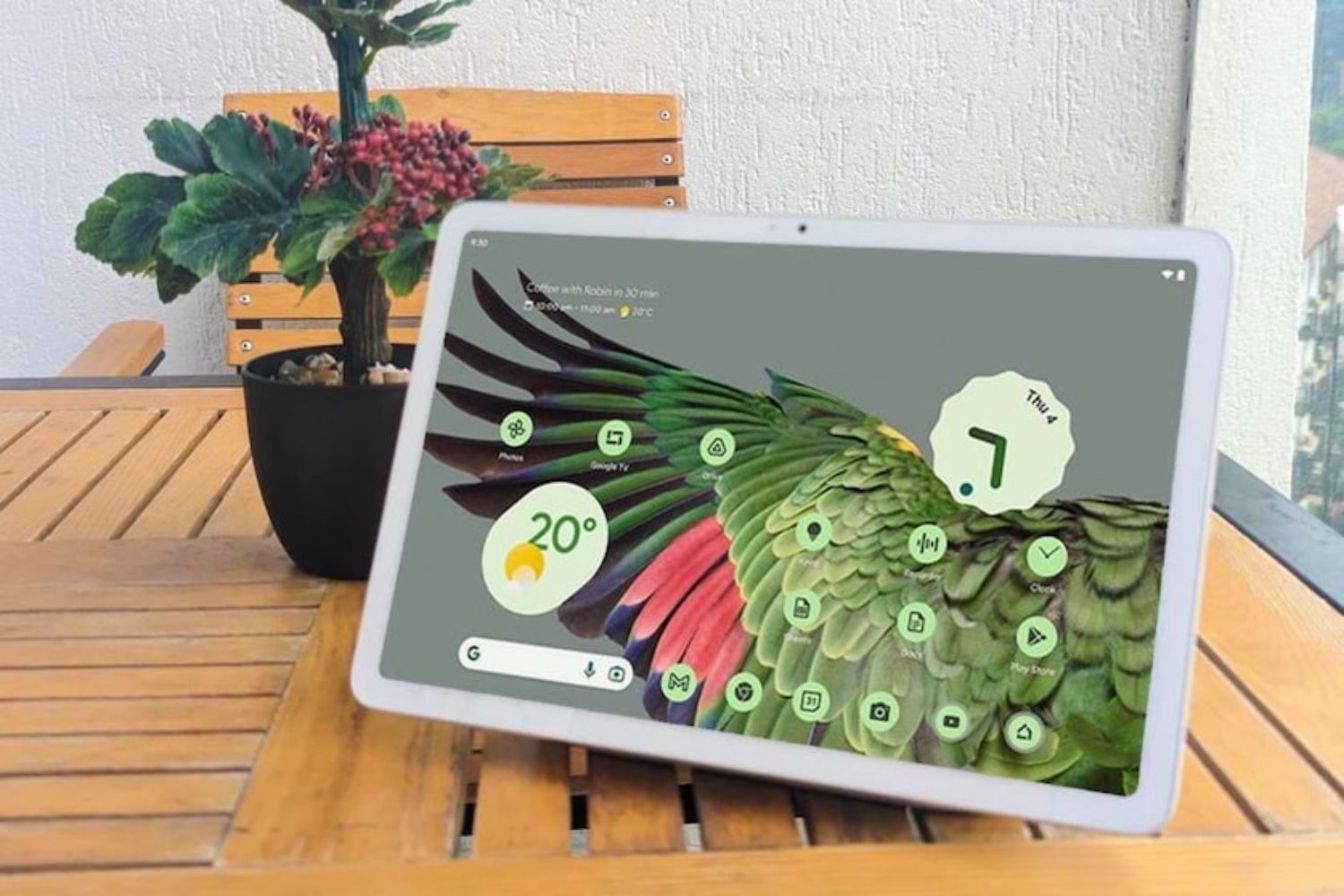What is a Phone Hotspot?
A phone hotspot, also known as a mobile hotspot or tethering, is a feature that allows a smartphone to function as a portable Wi-Fi hotspot. This means that the phone can share its cellular data connection with other devices such as laptops, tablets, or other smartphones, essentially providing them with internet access. In essence, a phone hotspot transforms your mobile device into a wireless router, enabling other devices to connect to the internet using the phone's cellular data connection.
When you activate the hotspot feature on your phone, it creates a secure Wi-Fi network that other devices can join. This network is password-protected to ensure that only authorized users can connect to it. Once connected, the devices can access the internet, send and receive emails, stream videos, and perform various online tasks, all using the cellular data from the phone.
The hotspot feature is particularly useful when you are in a location where Wi-Fi access is limited or unavailable. It provides a convenient way to get online using the cellular data plan associated with your smartphone. Whether you're traveling, working remotely, or simply need internet access in a pinch, a phone hotspot can be a valuable tool for staying connected.
In addition to sharing internet access, some phone hotspots also allow for the sharing of files and other resources between connected devices. This can be especially handy in a business or collaborative setting where multiple users need to access the same information or work on shared projects.
Overall, a phone hotspot offers a flexible and convenient way to extend internet connectivity to multiple devices, leveraging the power of your smartphone's cellular data connection to keep you connected wherever you go.
How Does a Phone Hotspot Work?
When you enable the hotspot feature on your smartphone, you essentially turn it into a portable Wi-Fi router. This allows other devices to connect to the internet using the phone's cellular data connection. The process begins with your smartphone establishing a Wi-Fi network, similar to the setup in a home or office, but on a smaller scale. This network is secured with a password to ensure that only authorized users can connect to it.
Once the Wi-Fi network is active, other devices such as laptops, tablets, or other smartphones can join the network by entering the provided password. After successfully connecting, these devices can access the internet, send and receive emails, stream media, and perform various online activities using the cellular data from the phone.
The phone acts as a bridge between the cellular network and the connected devices, relaying data back and forth. When a connected device requests data, the phone retrieves it using its cellular connection and transmits it to the device through the Wi-Fi network. This seamless process allows multiple devices to share the phone's internet connection, effectively extending internet access to those devices.
The functionality of a phone hotspot is not limited to providing internet access. Some smartphones offer advanced features, such as the ability to share files and resources among connected devices. This can be particularly beneficial in collaborative settings, allowing users to access shared documents, collaborate on projects, or transfer files seamlessly.
It's important to note that using a phone hotspot consumes the phone's cellular data. The data usage is determined by the activities of the connected devices, so it's essential to monitor data usage to avoid exceeding your cellular plan's limits.
In essence, a phone hotspot works by leveraging the smartphone's cellular data connection to create a portable Wi-Fi network, enabling other devices to access the internet and, in some cases, share resources. This functionality provides flexibility and convenience, especially in situations where traditional Wi-Fi access is limited or unavailable.
Benefits of Using a Phone Hotspot
Using a phone hotspot offers a multitude of benefits that cater to the diverse needs of modern-day connectivity. Here are the key advantages:
-
Flexibility and Mobility: A phone hotspot empowers users to stay connected on the go. Whether traveling for business, studying in a remote location, or simply enjoying a day outdoors, the ability to create a Wi-Fi network using a smartphone's cellular data ensures uninterrupted access to the internet. This flexibility is invaluable in scenarios where traditional Wi-Fi networks are unavailable or unreliable.
-
Cost-Effectiveness: For individuals or businesses with limited data plans or those who frequently travel, a phone hotspot can be a cost-effective solution. Rather than investing in separate data plans for multiple devices, leveraging the existing cellular data plan of a smartphone to provide internet access to other devices can lead to significant cost savings.
-
Emergency Connectivity: In situations where traditional internet connections fail or are unavailable, a phone hotspot serves as a reliable backup. Whether it's during a power outage, network outage, or while traveling in remote areas, having the ability to create a Wi-Fi network using a smartphone can be a lifeline for accessing crucial information, communicating with others, or completing essential tasks.
-
Remote Work and Productivity: With the rise of remote work and virtual collaboration, a phone hotspot becomes an essential tool for professionals. It enables seamless connectivity for laptops and other devices, allowing individuals to work from virtually anywhere. This flexibility enhances productivity and empowers individuals to stay connected with colleagues and clients without being tethered to a traditional Wi-Fi network.
-
Sharing Resources: Aside from internet access, some phone hotspots facilitate the sharing of files and resources among connected devices. This feature is particularly beneficial in group settings, enabling collaborative work, file sharing, and efficient communication among team members. It fosters a seamless workflow and enhances teamwork in various professional and personal scenarios.
-
Security and Control: Utilizing a phone hotspot provides a secure and controlled internet environment. By setting up a password-protected network, users can ensure that only authorized individuals have access to the hotspot. This level of control enhances privacy and security, especially when connecting to public Wi-Fi networks poses potential security risks.
In essence, the benefits of using a phone hotspot extend beyond mere internet connectivity. They encompass flexibility, cost-effectiveness, reliability, productivity, resource sharing, and enhanced security, making phone hotspots indispensable in today's dynamic and interconnected world.
Limitations of Using a Phone Hotspot
While phone hotspots offer remarkable flexibility and connectivity, it's essential to acknowledge their limitations. Understanding these constraints can help users make informed decisions and effectively manage their connectivity needs.
-
Data Consumption: Using a phone hotspot consumes the cellular data of the hosting device. This can lead to rapid data depletion, especially when multiple devices are connected or bandwidth-intensive activities such as video streaming or large file downloads are performed. Users must monitor their data usage diligently to avoid exceeding their data plan limits and incurring additional charges.
-
Battery Drain: Operating as a hotspot can significantly drain the battery of the hosting smartphone. The continuous transmission of data and the creation of a Wi-Fi network can accelerate battery consumption, potentially leading to a shorter device lifespan. In situations where access to a power source is limited, prolonged use of the hotspot feature may not be sustainable.
-
Signal Strength and Coverage: The quality of the internet connection provided by a phone hotspot is contingent on the cellular signal strength in the area. In locations with weak or fluctuating signals, the performance of the hotspot may be compromised, resulting in slow or unreliable internet access for connected devices. This limitation is particularly relevant in remote or rural areas with limited network coverage.
-
Network Congestion: In densely populated or high-traffic areas, cellular networks may experience congestion, leading to reduced data speeds and overall performance. When using a phone hotspot in such environments, users may encounter sluggish internet connectivity, affecting their ability to perform tasks efficiently.
-
Device Compatibility: Not all devices are compatible with every phone hotspot. While most modern devices support Wi-Fi connections, older or specialized equipment may face compatibility issues when attempting to connect to a phone hotspot. This can restrict the seamless sharing of internet access across various devices, necessitating additional troubleshooting and potential workarounds.
-
Regulatory Restrictions: Some cellular plans and carriers impose limitations or additional charges for using the hotspot feature. These restrictions may include data caps specifically for hotspot usage, reduced data speeds after reaching certain thresholds, or additional fees for enabling the hotspot functionality. Users should review their cellular plan details to understand any associated limitations or costs.
Understanding these limitations empowers users to make informed decisions regarding the usage of phone hotspots. By proactively addressing these constraints, individuals and businesses can optimize their connectivity strategies and leverage phone hotspots effectively while mitigating potential challenges.
Setting Up a Phone Hotspot
Setting up a phone hotspot is a straightforward process that varies slightly depending on the operating system of the smartphone. Whether using an iPhone or an Android device, the steps to enable the hotspot feature are designed to be user-friendly and accessible. Here's a comprehensive guide to setting up a phone hotspot:
iPhone:
-
Access Settings: Open the "Settings" app on your iPhone and navigate to the "Personal Hotspot" option. This feature may be located under the "Cellular" or "Mobile Data" section, depending on the iOS version.
-
Enable Personal Hotspot: Toggle the switch to enable the Personal Hotspot feature. Upon activation, your iPhone will prompt you to set a Wi-Fi password for the hotspot. This password ensures secure access to the network and prevents unauthorized usage.
-
Connect Devices: Once the hotspot is active, other devices can connect to it by selecting the iPhone's network from their Wi-Fi settings and entering the provided password. The connected devices can now access the internet using the iPhone's cellular data connection.
Android:
-
Access Hotspot Settings: Open the "Settings" app on your Android device and locate the "Network & Internet" or "Connections" section. Within this section, look for the "Hotspot & Tethering" or "Mobile Hotspot and Tethering" option.
-
Enable Mobile Hotspot: Tap on the "Mobile Hotspot" or similar option to activate the hotspot feature. You may have the option to customize the network name (SSID) and set a password for the hotspot to ensure secure connectivity.
-
Connect Devices: Once the hotspot is active, other devices can connect to it by selecting the Android device's network from their Wi-Fi settings and entering the provided password. The connected devices can now utilize the Android device's cellular data for internet access.
Additional Considerations:
-
Data Usage Monitoring: It's crucial to monitor data usage when using a phone hotspot to avoid exceeding data plan limits. Most smartphones provide built-in tools to track data consumption and set alerts for approaching limits.
-
Battery Conservation: Prolonged use of the hotspot feature can drain the smartphone's battery. Consider connecting the device to a power source or using power-saving settings to optimize battery life.
-
Security Measures: To maintain security, regularly update the hotspot password and avoid sharing it with unauthorized individuals. This helps prevent unauthorized access to the hotspot network.
By following these steps and considerations, users can efficiently set up and manage a phone hotspot, providing seamless internet connectivity for other devices while optimizing data usage and device performance.
Tips for Using a Phone Hotspot Efficiently
Using a phone hotspot efficiently involves optimizing its functionality, managing data usage, and ensuring a seamless connectivity experience for all connected devices. Here are essential tips for maximizing the efficiency of a phone hotspot:
-
Data Monitoring and Management: Regularly monitor data usage to avoid exceeding plan limits. Set data usage alerts or limits on the hosting device to prevent unexpected overages. Consider using data-saving features on connected devices to minimize unnecessary data consumption.
-
Selective Use of High-Bandwidth Activities: Be mindful of bandwidth-intensive activities such as video streaming and large file downloads. Limiting these activities or scheduling them during off-peak hours can help conserve data and maintain optimal hotspot performance.
-
Battery Optimization: To preserve the hosting device's battery life, consider connecting it to a power source when using the hotspot for extended periods. Utilize power-saving modes and settings to minimize battery drain while ensuring uninterrupted connectivity.
-
Network Security: Regularly update the hotspot password and avoid sharing it with unauthorized individuals. This helps prevent unauthorized access and ensures a secure and private network environment.
-
Signal Strength Optimization: Position the hosting device in an area with strong cellular signal reception to optimize hotspot performance. Avoid obstructing the device's antennas and consider using signal boosters or external antennas for improved connectivity in challenging environments.
-
Device Compatibility Consideration: Ensure that all devices intended to connect to the hotspot are compatible with the hosting device. Address any compatibility issues by updating device software or adjusting network settings as needed.
-
Frequent Hotspot Checks: Periodically review the hotspot settings and connected devices to ensure smooth operation. Address any connectivity issues promptly and consider restarting the hotspot if performance issues arise.
-
Resource Sharing Management: If utilizing the file-sharing feature of the hotspot, implement access controls and permissions to manage resource sharing among connected devices effectively.
-
Network Congestion Awareness: Be mindful of network congestion in crowded areas, as it can impact hotspot performance. Consider adjusting usage patterns or relocating to areas with better network coverage when feasible.
-
Regular Updates and Maintenance: Keep the hosting device's operating system and hotspot-related software up to date to ensure optimal performance and security.
By implementing these tips, users can harness the full potential of a phone hotspot, effectively managing data usage, optimizing device performance, and ensuring reliable connectivity for all connected devices. This proactive approach enhances the overall efficiency and usability of the phone hotspot, catering to diverse connectivity needs in various settings and scenarios.







